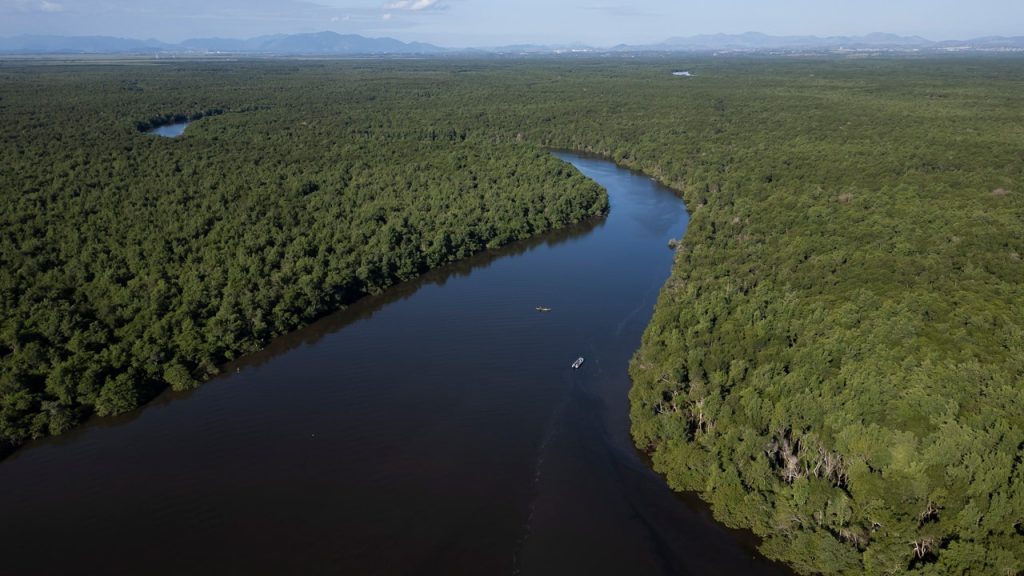Over the past four years, the non-profit organization Instituto Mar Urbano has planted 30,000 mangrove trees in the Guapimirim environmental protection area in Rio de Janeiro, standing at an impressive height of 13 feet. This reforestation project serves as an example for cities looking to improve climate resilience using natural means, as mangroves play a crucial role in protecting against floods that have been on the rise globally. The recent devastating flood in Brazil’s Rio Grande do Sul region highlighted the importance of such ecosystems in preventing water damage and stabilizing soil, as well as acting as a carbon sink. The reforestation efforts in Rio’s bay have also led to cleaner water and the return of marine species like crabs, providing an additional source of income for local residents.
While a lack of mangroves was not the primary cause of flooding around Porto Alegre in Rio Grande do Sul, the water mainly flowed down rivers into the area. Climate Central’s coastal risk map predicts significant flooding in the region by 2050 and 2100, emphasizing the urgent need for action to mitigate the encroachment of sea waters. The natural vegetation in the Guapimirim area serves as a sponge, reducing flood energy and protecting one million residents in cities like Sao Goncalo. Officials recognize the importance of restoring such areas in cities to create resilient human settlements prepared for the effects of climate change.
Flood-related disasters across the globe have increased by 134% since 2000, according to the World Meteorological Organization’s 2021 report, underscoring the pressing need for proactive measures to address climate-related risks. Deforestation in Rio Grande do Sul has worsened flooding, with the loss of 22% of native vegetation since 1985 attributed to activities like agriculture and cattle ranching. Authorities in Rio Grande do Sul are now considering a large-scale reforestation effort in the wake of recent tragedies, although the specifics of the investment and initiatives have yet to be announced.
The director of Instituto Mar Urbano, Ricardo Gomes, emphasizes the importance of tree planting as an act of environmental recovery and a crucial step in combating climate change. The organization’s reforestation efforts in Rio de Janeiro have not only improved water quality and restored marine life but also served as a model for other cities grappling with climate resilience challenges. The disastrous floods in Brazil’s Rio Grande do Sul have highlighted the need for long-term solutions like reforestation to address the increasing risks posed by climate change and natural disasters.
Mangroves in the Guapimirim area of Rio de Janeiro have proven to be effective in preventing flooding and stabilizing soil, demonstrating the power of natural vegetation in mitigating the impact of climate-related risks. The collaboration between non-profit organizations, government agencies, and local communities in reforestation projects like the one in Rio’s bay showcases the potential for collective action in addressing environmental challenges. As the world grapples with the increasing frequency and intensity of natural disasters, initiatives like mangrove reforestation offer a beacon of hope for building more resilient ecosystems and communities in the face of climate change.


